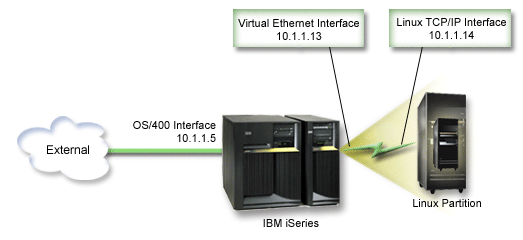The Proxy ARP methods uses a technique commonly known as transparent subnetting.
While the following information will provide a procedure to create connectivity between your virtual and external networks, you might want to learn more information about transparent subnetting. Here are some useful links:
- V4 TCP/IP for AS/400(R): More Cool Things Than Ever
- This pre-V5R3 redbook provides sample scenarios that demonstrate common solutions with example configurations. It also helps you plan, install, tailor, configure, and troubleshoot TCP/IP on your iSeries™ server.
- TCP/IP routing and workload balancing
- This topic provides techniques and instructions for routing and workload balancing.
If you choose to use the Proxy ARP method, you must have a firm understanding of subnetting and TCP/IP. You will need to obtain a contiguous block of IP addresses that are routable by your network. You subnet this block of IP addresses and assign one to the virtual TCP/IP interface and one to the TCP/IP connection in your logical partition as described in the following pre-V5R3 figure.

In this example, a contiguous block of four IP addresses is used, which is 10.1.1.12 - 10.1.1.15. Since it is a block of four IP address, the subnet mask for these addresses is 255.255.255.252. To configure a setup similar to this, use the following instructions:
